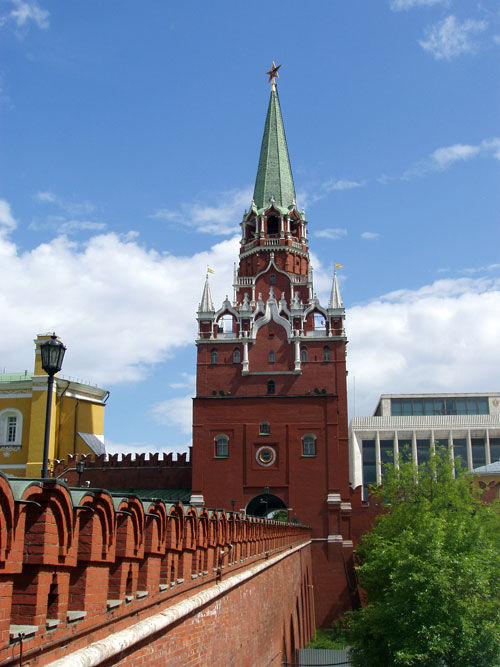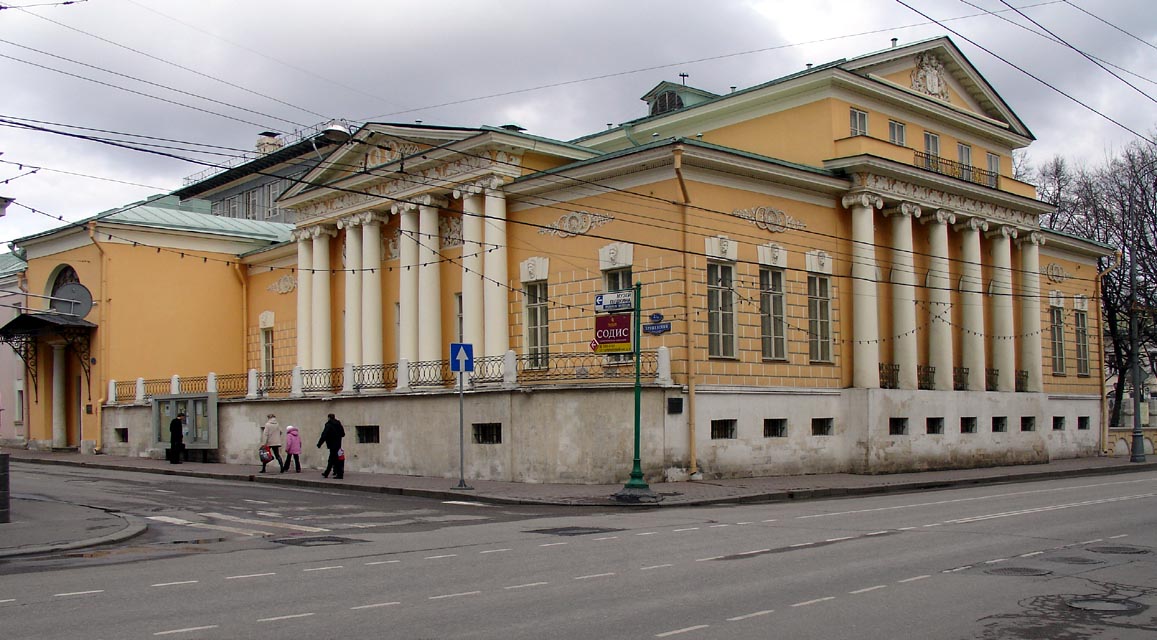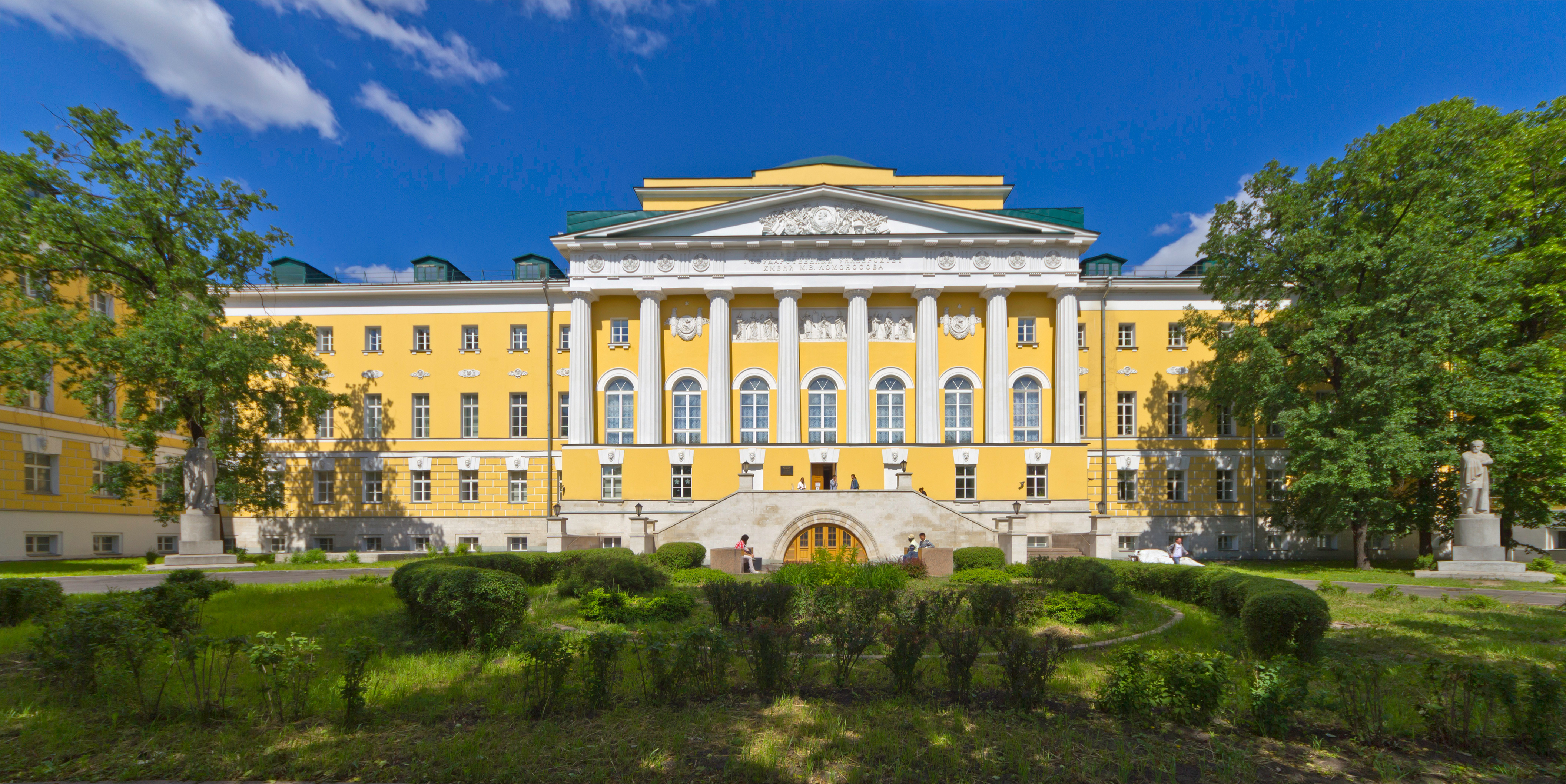|
Francesco Camporesi
Francesco Camporesi (1747, Bologna – 1831, Moscow) was an Italian architect, painter, engraver and educator who worked in Moscow in 1780s-1820s. Most of his architectural work perished in the Fire of 1812, was severely altered, demolished or otherwise lost. Biography Camporesi arrived in Russia in the 1780s, probably as an assistant to Giacomo Quarenghi. Extent of his architectural work in 18th century remains disputed, and he is better known as a fine vedutist who documented Moscow prior to the devastating Fire of 1812. For a decade (1784-1796) Camporesi worked under Quarenghi and Karl Blank on the Catherine's Palace in Moscow, where he was employed both as an architect and a plasterer craftsman. Eventually, he developed into a ''generalist architect'': capable of independently managing construction projects, Camporesi was regularly employed by private clients - for his design talents as well as business capabilities. His input to Nikolai Sheremetev's Ostankino Palace, ... [...More Info...] [...Related Items...] OR: [Wikipedia] [Google] [Baidu] |
Vvedenskoye - Francesco Camporesi 01
Vvedensky (masculine), Vvedenskaya (feminine), or Vvedenskoye (neuter) may refer to: *Vvedensky (surname) (''Vvedenskaya''), Russian last name *Vvedensky Municipal Okrug, a municipal okrug in Petrogradsky District of the federal city of St. Petersburg, Russia *Vvedensky (rural locality) Vvedensky (russian: Введенский; masculine), Vvedenskaya (; feminine), or Vvedenskoye (; neuter) is the name of several rural localities in Russia. Modern localities * Vvedensky, Belgorod Oblast, a '' khutor'' in Vvedeno-Gotnyansky Rura ... (''Vvedenskaya'', ''Vvedenskoye''), several rural localities in Russia See also * Vedensky (other) {{Disambiguation, geo ... [...More Info...] [...Related Items...] OR: [Wikipedia] [Google] [Baidu] |
Sheremetev
The House of Sheremetev (russian: Шереме́тевы) was one of the wealthiest and most influential noble families in Russia descending from Feodor Koshka who was of Old Prussian origin. History The family held many high commanding ranks in the Russian military, governorships and eventually the rank of Count of the Russian Empire. Notable members * Yelena Sheremeteva, third wife of Tsarevich Ivan Ivanovich (1554–1581), son of Ivan the Terrible. *Fedor Sheremetev (1570–1650) cousin of Tsar Michael I and head of government in 1613–18 and 1642–46 *Vasily Borisovich Sheremetev (1622–1682) fought in Ukraine * Count Boris Sheremetev (1652–1719) military leader and diplomat during the Great Northern War * Count Pyotr Borisovich Sheremetev (1713—1788) son of Boris; courtier and noted patron of Russian theater * Princess Natalia Borisovna Dolgorukova, daughter of Boris and wife of Prince Ivan Dolgorukov * Count Nikolai Petrovich Sheremetev (1751–1809) son ... [...More Info...] [...Related Items...] OR: [Wikipedia] [Google] [Baidu] |
Russian Architects
This is a list of architects of the Russian Federation, Soviet Union, Russian Empire, Tsardom of Russia and Grand Duchy of Moscow, both ethnic Russians and people of other ethnicities. This list also includes those who were born in the ///Tsardom of Russia/Grand Duchy of Moscow but later emigrated, and those who were born elsewhere but immigrated to the country and/or worked there for a significant period of time. Attested biographies of architects in history of Russia, Russian history date back to 1475, when Aristotile Fioravanti, a native of Bologna, arrived in Moscow to build the Dormition Cathedral, Moscow, Dormition Cathedral of the Moscow Kremlin. Foreign architects had a notable place in Russian and Soviet Union, Soviet history, especially in the last quarter of the 18th century (Charles Cameron (architect), Charles Cameron, Bartolomeo Rastrelli, Carlo Rossi (architect), Carlo Rossi and others) and in the first quarter of the 20th century (Ludwig Mies van der Rohe, Mies van ... [...More Info...] [...Related Items...] OR: [Wikipedia] [Google] [Baidu] |
18th-century Italian Architects
The 18th century lasted from January 1, 1701 ( MDCCI) to December 31, 1800 ( MDCCC). During the 18th century, elements of Enlightenment thinking culminated in the American, French, and Haitian Revolutions. During the century, slave trading and human trafficking expanded across the shores of the Atlantic, while declining in Russia, China, and Korea. Revolutions began to challenge the legitimacy of monarchical and aristocratic power structures, including the structures and beliefs that supported slavery. The Industrial Revolution began during mid-century, leading to radical changes in human society and the environment. Western historians have occasionally defined the 18th century otherwise for the purposes of their work. For example, the "short" 18th century may be defined as 1715–1789, denoting the period of time between the death of Louis XIV of France and the start of the French Revolution, with an emphasis on directly interconnected events. To historians who expand ... [...More Info...] [...Related Items...] OR: [Wikipedia] [Google] [Baidu] |
19th-century Italian Architects
The 19th (nineteenth) century began on 1 January 1801 (Roman numerals, MDCCCI), and ended on 31 December 1900 (Roman numerals, MCM). The 19th century was the ninth century of the 2nd millennium. The 19th century was characterized by vast social upheaval. Slavery was abolitionism, abolished in much of Europe and the Americas. The Industrial Revolution, First Industrial Revolution, though it began in the late 18th century, expanding beyond its British homeland for the first time during this century, particularly remaking the economies and societies of the Low Countries, the Rhineland, Northern Italy, and the Northeastern United States. A few decades later, the Second Industrial Revolution led to ever more massive urbanization and much higher levels of productivity, profit, and prosperity, a pattern that continued into the 20th century. The Gunpowder empires, Islamic gunpowder empires fell into decline and European imperialism brought much of South Asia, Southeast Asia, and almost ... [...More Info...] [...Related Items...] OR: [Wikipedia] [Google] [Baidu] |
Ascension Of Jesus
The Ascension of Jesus (anglicized from the Vulgate la, ascensio Iesu, lit=ascent of Jesus) is the Christian teaching that Christ physically departed from Earth by rising to Heaven, in the presence of eleven of his apostles. According to the New Testament narrative, the Ascension occurred on the fortieth day counting from the resurrection. In the Christian tradition, reflected in the major Christian creeds and confessional statements, God exalted Jesus after his death, raising him from the dead and taking him to Heaven, where Jesus took his seat at the right hand of God. In Christian art, the ascending Jesus is often shown blessing an earthly group below him, signifying the entire Church. The Feast of the Ascension is celebrated on the 40th day of Easter, always a Thursday; some Orthodox traditions have a different calendar up to a month later than in the Western tradition, and while the Anglican Communion continues to observe the feast, many Protestant churches have abandone ... [...More Info...] [...Related Items...] OR: [Wikipedia] [Google] [Baidu] |
Orlov (family)
Orlov (russian: Орлóв) is the name of a Russian noble family which produced several distinguished statesmen, scientists, diplomats, and soldiers. The family first gained distinction in the 18th century through the achievements of five Orlov brothers, of whom the second eldest was Catherine the Great's paramour, and two younger brothers were notable military commanders. Orlov brothers Grigory Grigoryevich Orlov Count Grigory Grigoryevich Orlov (1734–1783), who created for his family such an illustrious Russian history, was the son of Gregory Orlov, governor of Great Novgorod. He was educated in the corps of cadets at St Petersburg, began his military career in the Seven Years' War, and was wounded at Zorndorf. While serving in the capital as an artillery officer he caught the fancy of Grand Duchess Catherine Alekseyevna, and was the leader of the conspiracy which resulted in the dethronement and death of her husband Peter III (1762). After the event, Catherine ... [...More Info...] [...Related Items...] OR: [Wikipedia] [Google] [Baidu] |
The Protection Of The Mother Of God
The Intercession of the Theotokos, or the Protection of Our Most Holy Lady Theotokos and Ever-Virgin Mary, is a Christianity, Christian feast of the Mother of God celebrated in the Eastern Orthodox and Byzantine Catholic Churches on October 1 (Julian calendar: October 14). The feast celebrates the protection afforded the faithful through the intercessions of the Theotokos (''lit.'' Mother of God, one Eastern title of the Virgin Mary). The feast is commemorated in Eastern Orthodoxy as a whole, but by no means as fervently as it is in Russia, Belarus, and, especially, Ukraine. In the Slavic Orthodox Churches it is celebrated as the most important solemnity besides the Twelve Great Feasts and Easter, Pascha. In Ukrainians, Ukraine, it has a special meaning through its connection to the spirituality of the Ukrainian Cossacks and, accordingly and more recently, to Defenders of Ukraine Day. Etymology The Protection of the Theotokos or the Intercession of the Theotokos ( cu, Покров� ... [...More Info...] [...Related Items...] OR: [Wikipedia] [Google] [Baidu] |
Stepan Stepanovich Apraksin
Stepan Stepanovich Apraksin (russian: Степан Степанович Апраксин, 1757 – 1827) was a Russian military commander and aristocrat, the only son of Stepan Fedorovich Apraksin, likewise a famed military commander and a high-ranking military commander in the Russian army. Stepan Stepanovich Apraksin was born 1757. He started his military career at the age of ten, after being admitted to the Semenovsky Regiment. Initially serving with the rank of ensign, he received military training there and in 1772 he started active service with the army in the rank of captain. Transferred to Kiev, he served as an officer in the local infantry regiment. With his unit he took part in the Russo-Turkish War of 1768–1774. For his service in the Crimean campaign, in 1777 he was promoted to the rank of Colonel. Quickly rising through the ranks of the tsarist army, in 1783 Apraksin was promoted to the rank of Brigadier and attached to the 20th Astrakhan Regiment, with wh ... [...More Info...] [...Related Items...] OR: [Wikipedia] [Google] [Baidu] |
Afanasy Grigoriev
Afanasy Grigorievich Grigoriev (russian: Афанасий Григорьевич Григорьев) (21 January 1782 – 13 May 1868) was a Russian Neoclassical architect, who worked in Moscow and its suburbs. Grigoriev is remembered for his refined Empire style mansions, completion of Great Ascension Church (which, unfinished, housed the wedding of Alexander Pushkin in 1831) and assistance to Domenico Gilardi in rebuilding Moscow after the Great Fire of 1812. Biography Grigoriev was born a serf, owned by the Kretov family, and acquired freedom at the age of 22. By this time, he was a long-time apprentice to Moscow-based Gilardi family of Swiss architects. Giovanni Gilardi was the chief architect of continuously expanding Moscow Orphanage, Widow's House (public almshouse) and Catherine's Institute; his son, Domenico Gilardi, inherited the family practice and managed rebuilding of these and other public structures after the devastating Fire of 1812. Grigoriev, like Domeni ... [...More Info...] [...Related Items...] OR: [Wikipedia] [Google] [Baidu] |
Domenico Giliardi
Domenico Gilardi (Доменико Жилярди, 1785–1845), was a Swiss people, Swiss architect who worked primarily in Moscow, Russia in Neoclassicism, Neoclassicist style. He was one of key architects charged with rebuilding the city after the Fire of Moscow (1812), Fire of 1812. Gilardi’s legacy survives in public buildings like Moscow Orphanage, Widows’ House, Catherine’s Institute and the Old Hall of Moscow State University, Moscow University. Early life The Gilardi family of architects, originally from Canton of Ticino, Ticino, established itself in Russia in the middle of the 18th century. Domenico’s father Giovanni, also known as ''Ivan Dementievich'', was well known in Moscow. Domenico was born in Montagnola and lived there until his mother brought him to Russia in 1796. Domenico longed for a career in painting, so in 1799, his father sent him to an Italian workshop in Saint Petersburg, St.Petersburg. After the death of Paul I of Russia, Paul I, dowager Em ... [...More Info...] [...Related Items...] OR: [Wikipedia] [Google] [Baidu] |
Moscow Kremlin
The Kremlin ( rus, Московский Кремль, r=Moskovskiy Kreml', p=ˈmɐˈskofskʲɪj krʲemlʲ, t=Moscow Kremlin) is a fortified complex in the center of Moscow founded by the Rurik dynasty. It is the best known of the kremlins (Russian citadels), and includes five palaces, four cathedrals, and the enclosing Kremlin Wall with Kremlin towers. In addition, within this complex is the Grand Kremlin Palace that was formerly the Tsar's Moscow residence. The complex now serves as the official residence of the President of the Russian Federation and as a museum with almost 3 million visitors in 2017. The Kremlin overlooks the Moskva River to the south, Saint Basil's Cathedral and Red Square to the east, and the Alexander Garden to the west. The name "''Kremlin''" means "fortress inside a city", and is often also used metonymically to refer to the government of the Russian Federation. It previously referred to the government of the Soviet Union (1922–1991) and its high ... [...More Info...] [...Related Items...] OR: [Wikipedia] [Google] [Baidu] |




.png)



